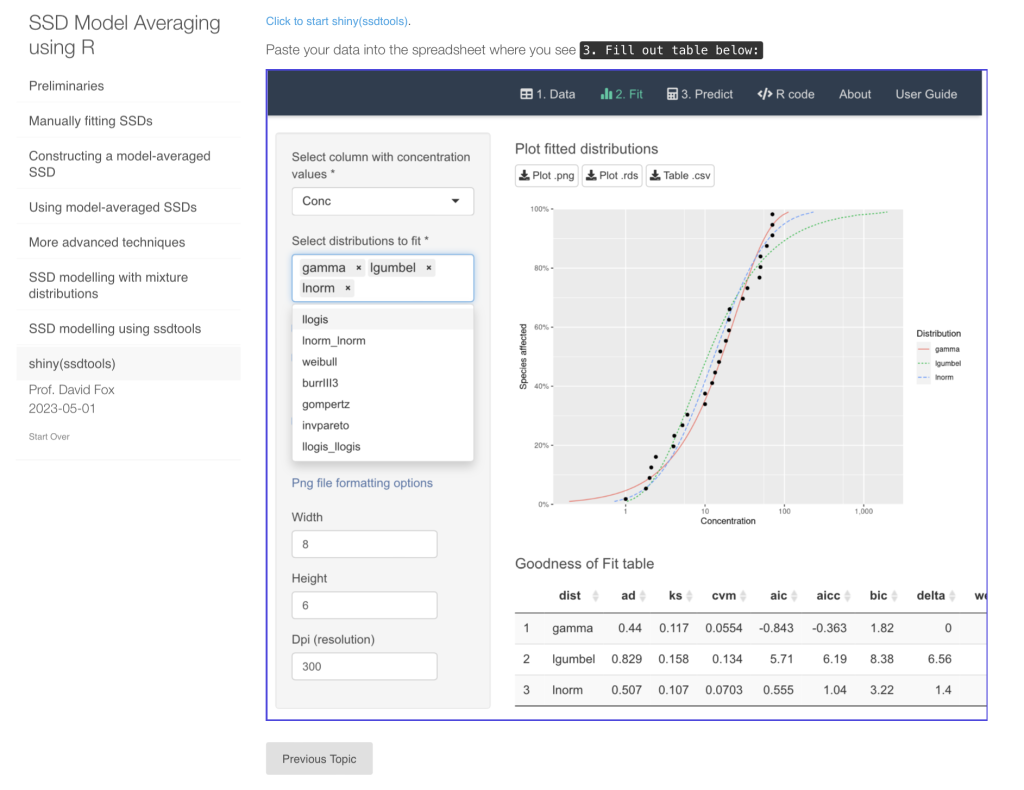Heads Up!
You might not be aware, but Australia and New Zealand will be transitioning away from the Burrlioz software (and by extension – the default use of the Burr distribution) for SSD modelling. This has been motivated by two considerations:
- Burrlioz is now over 25 years old and many users are reporting that the software no longer runs on today’s modern computers
there have been new statistical developments (most importantly model averaging and mixture modelling) and software developments (R package ssdtools) for SSD modelling that are superior to Burrlioz.
and
This is an essential course if you are a practising ecotoxicologist who has an interest in:
- concentration-response (C-R) modelling
- species sensitivity distributions (SSDs)
- the Burrlioz software
- ssdtools software
- establishing guideline values
just learning about model averaging
or
Course description
Although model averaging is not a new concept (it dates back to 1963), its application to SSD modelling certainly is. In this context, model averaging (MA) is designed to help address a major conundrum in SSD modelling. And that is “what distribution do I use for the SSD?”. As noted by Fox and others, unlike some other branches of science where there is either a ‘natural’ distribution or some theoretical basis to help guide the choice, no such assistance is available in ecotoxicology. Coupled with this lack of guidance is the pathologically small sample sizes that we invariably use to fit SSDs and this results in the non-rejection of almost any plausible candidate distribution.
This course will guide you through what can be a complex topic. We aim to do this in a natural, intuitive way rather than by formal instruction (although there’s a bit of that!). Commencing with a review of why the process of averaging is so important for so much of what we do in science and progressing to measures of goodness-of-fit (GoF) and the introduction of information theoretic measures such as entropy; Kullback-Liebler information; and Akaike’s Information Criterion (AIC). These concepts will be introduced and discussed in the context of their application to SSD modelling and modelling more generally. We will use R in a ‘hands-on’ mode to perform some of the basic calculations using likelihood methods to obtain weights for comparing alternative SSD models. You will also be introduced to generalized linear models using R as well as tools to assess the adequacy of the fit. From there we move on to putting the theory into practice with an emphasis on ‘learning by doing’. Initially, you will write your own functions in R to fit model-averaged SSDs and to use the fitted model to estimate HCx values. You will be shown ‘new’ techniques of developing and fitting mixture models to handle bimodal SSDs before finally moving on to the R package ssdtools and its on-line implementation shiny(ssdtools).
Learning outcomes
On completion of this course you will:
Recognition
If you choose, you may take an online assessment on completion of this course to test your understanding of model averaging. The assessment will be a combination of multiple-choice questions together with demonstration of competency using R and various packages and tools to perform various calculations associated with model averaging. The assessment is not difficult if you have worked through the course and satisfactorily completed the quizzes along the way. A pass of at least 70% is required to qualify for an ECOTOX-U certificate of completion in model averaging.
Course notes - free to enrolled students.
After successful enrolment, you will be provided with a special discount code.
Use this in the Store to reduce the price of the course notes to $0!!

